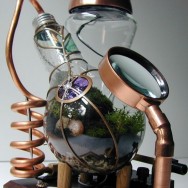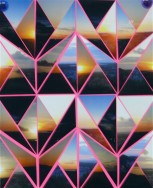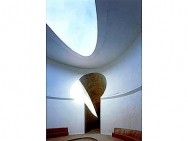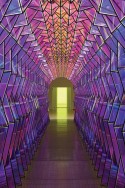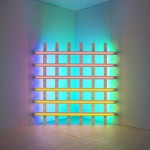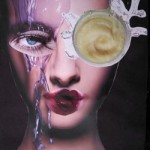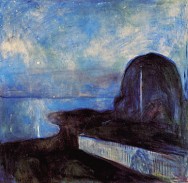
NIGHT PROJECT BRAINSTORMING:
Describe what you did, where you went, in a few sentences.
Next, begin to think of ways you might convey this experience to a small group.
Think of four ways to express this experience:
one obvious
easy but ineffective
playing to your strengths
4) far outside the usual things you do ( a formula for disaster?).
Write these down in your sketchbook. You can really do anything, as long as you complete it in a week.
If you use images, they should be of a scale that will be visible to a dozen classmates. Make sure the technology is workable.
“Experience of the Night” Meet in teams:
(1) Each person should take two minutes and attempt to vividly describe what the experience was, along with details of what it felt like.
(2) After each team member has shared their experience, start to brainstorm presentation ideas that might work for any of the experiences. Some examples>>>
• Comemerative Quilt
• Night Effects Helmut
• Modified binoculars or glasses
• A collage
• A garment for night viewing
(3) Next, each team member should come up with an idea that is specifically appropriate to each of the other team members experience individual experience. One way to do this is to simple give each other prospective titles for a piece; for example “Tar Paper Hood with Star Patterns”.
(4) Finally, try to build upon these ideas, take some to an extreme. Considering far-fetched alternatives often leads to solutions that are both interesting and practical. Don’t let fear of failure get in your way. A creative solution is all about not getting distracted by the possibility of making mistakes.
NIGHT PROJECT BRAINSTORMING:
Describe what you did, where you went, in a few sentences.
Next, begin to think of ways you might convey this experience to a small group.Think of four ways to express this experience: one obvious easy but ineffectiveplaying to your strengths 4) far outside the usual things you do ( a formula for disaster?).
Write these down in your sketchbook. You can really do anything, as long as you complete it in a week.If you use images, they should be of a scale that will be visible to a dozen classmates. Make sure the technology is workable.“Experience of the Night” Meet in teams:(1) Each person should take two minutes and attempt to vividly describe what the experience was, along with details of what it felt like.(2) After each team member has shared their experience, start to brainstorm presentation ideas that might work for any of the experiences. Some examples>>>• Comemerative Quilt• Night Effects Helmut• Modified binoculars or glasses• A collage• A garment for night viewing
(3) Next, each team member should come up with an idea that is specifically appropriate to each of the other team members experience individual experience. One way to do this is to simple give each other prospective titles for a piece; for example “Tar Paper Hood with Star Patterns”.
(4) Finally, try to build upon these ideas, take some to an extreme. Considering far-fetched alternatives often leads to solutions that are both interesting and practical. Don’t let fear of failure get in your way. A creative solution is all about not getting distracted by the possibility of making mistakes.
for Next Meeting on October 8th, 2010…
No VoiceThread this week. Put all your energy into the presentation of the “Experience of the Night.”
Two weeks from today, October 15 is a holiday. Autumn Day. No on campus meeting.
I’ll be turning in midterm grades on October 14th. Your grade will be based on: Attendance + Completion of all VoiceThread + Team wiki project + Frottage Project + Ink Lamp Project
(very important) having completed your Night presentation on October 8th.
If possible attend the Art Opening at Ben Maltz Gallery at Otis College (just a few blocks from LMU). Tomorrow, October 9th, from 2 – 4 PM. This show is called “Make:Craft,” and a two of our projects later in the semester will relate to the subject matter.
Thanks, MK
PS– If you have any problems in creating you “Night” presentation, please contact me.
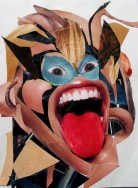 We watched one episode of John Cleese’s video, “The Human Face.”
We watched one episode of John Cleese’s video, “The Human Face.”